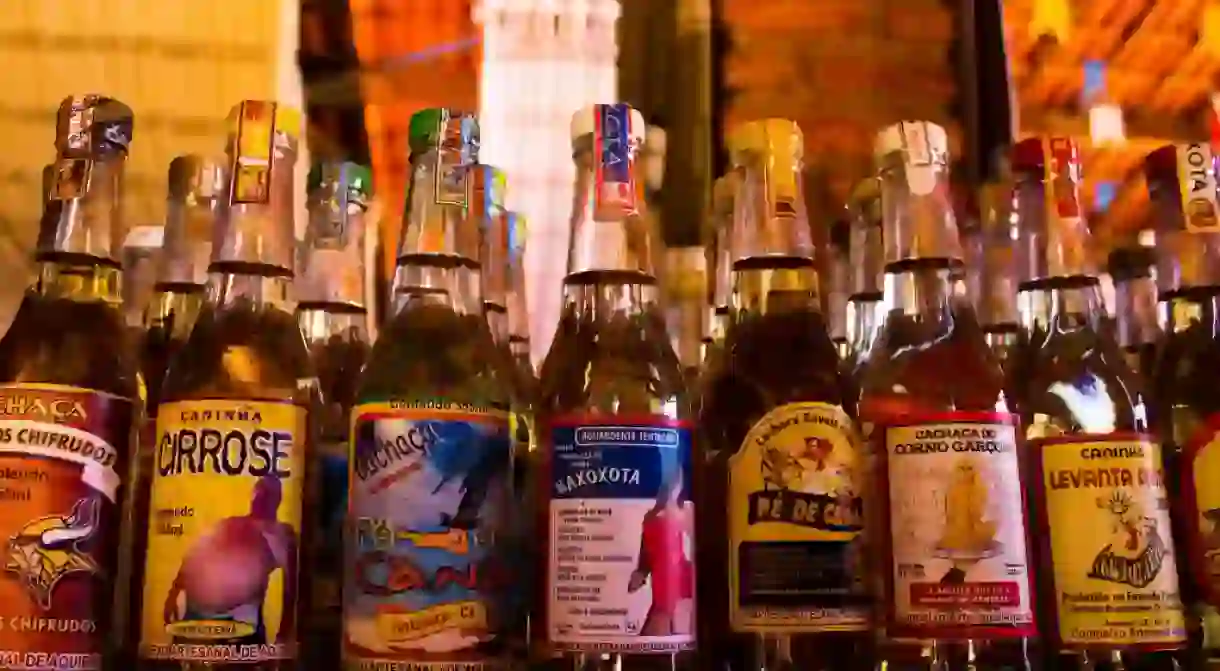10 Things You Didn't Know About Cachaça, Brazil

Cachaça is to Brazil as tequila is to Mexico. Made from sugarcane, cachaça is the country’s national spirit and the alcohol behind caipirinhas, Brazil’s famous cocktail. It’s not an exaggeration to say that everyone in Brazil has heard of cachaça; yet perhaps not everyone knows these curious facts about the spirit. Here are 10 things you probably didn’t know about cachaça.
Cachaça can only be from Brazil
To be legally called ‘cachaça’, the spirit must be produced in Brazil. Anything else – even if it’s produced with sugarcane and using exactly the same method – is not cachaça; it’s rum or sugarcane liquor. Brazil holds the copyright to the name.

Cachaça has to follow certain criteria to be cachaça
To be cachaça, the alcohol content has to be between 38 and 48%. Any more or any less is not considered cachaça.
Cachaça can be ‘outside of the law’
Some cachaças are not technically cachaça and are labeled ‘fora da lei‘, or ‘outside of the law’. A cachaça is outside of the law when its alcohol content is less than 38% or more than 48%, or when it’s mixed with another ingredient that isn’t sugarcane. One of the most common is the cachaça de jambu, a type of spirit mixed with the flowering herb jambu to create a drink that numbs the mouth and leaves behind a cooling sensation.
Brazil has a law on Caipirinhas
The Lei de Caipirinha – the Caipirinha Law – is legislation that determines what officially can be called a caipirinha. This means that at some point in history, the Brazilian government passed a law that states a caipirinha can only be called a caipirinha if it’s made with cachaça and mixed with lime and sugar. Many bars in Brazil make this famous cocktail using strawberries, passionfruit, and other such mixes and, even though they may be delicious, they’re not technically caipirinhas according to Brazilian law.

Cachaça is centuries old
The history of cachaça dates back 500 years old to the period when slavery was rife in Brazil. It’s believed the first cachaça was created by the enslaved Africans who made it from leftover sugarcane to give them energy and help them get through the strenuous work demanded of them.
Cachaça stimulates the appetite
In Brazil, it’s widely accepted that drinking pure cachaça before lunch or dinner will ‘open the appetite’ and let you enjoy your dish more. In many per-kilo restaurants (where a dish is valued based on its weight), there is free cachaça by the door that guests can drink before they select their food. For restaurants, it’s a win-win situation – the more food people eat, the higher the cost of the dish – and for diners, it’s a pleasant habit that makes lunchtimes that little bit more interesting.

The Day of Cachaça
The 13th September is ‘Day of Cachaça’ in Brazil and is held in memory of the ‘Cachaça revolution’ that took place in the late 17th century. The Portuguese banned the production and export of cachaça in Brazil, due to fears that it was competing too well against the Portuguese spirit, ‘bagaceira‘, made with pomace to make a type of brandy. Cachaça producers in Brazil, furious with this ban, went to Rio de Janeiro on 13th September to protest.
Brazil has thousands of cachaça brands
Cachaça is a complex drink with different flavors and individual ways of making it. As a result, there are more than 5,000 brands of cachaça in Brazil but the first one was Ypióca, launched between the end of the 19th and beginning of the 20th century. Before this, cachaça was sold in casks labeled only with the name of the producer.

There are expensive cachaça brands
The exclusive edition of Cachaça Vale Verde – considered one of the best brands of cachaça in Brazil – is priced around R$3,000 (approximately US$800). This edition has been aged for 18 years and is regarded the premium bottle in the Vale Verde line.
Cachaça production is an art
The production of cachaça is important to define the drink’s flavor and smell, especially the fermentation process. Producers often use wooden barrels – mostly indigenous wood – to expose the spirit to different aromas, imprinting up to 70 different tastes in cachaça brands. This process tends to produce yellow cachaça – known as gold or aged – which tends to be smoother than white cachaça, which is stored in stainless steel or peanut wood and has a stronger, often eye-watering taste.













